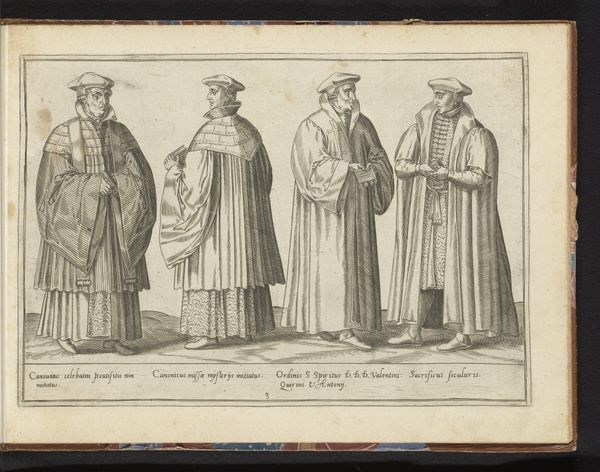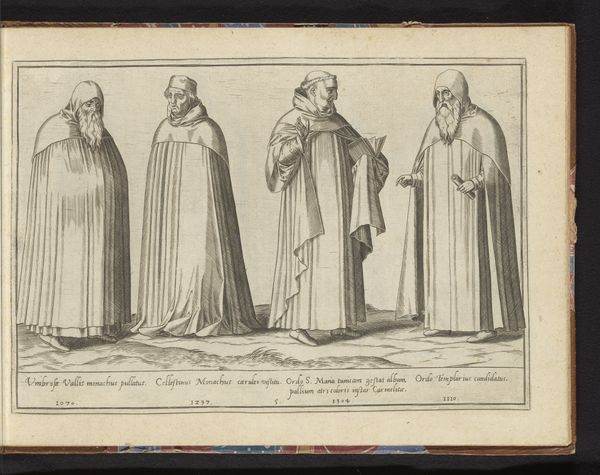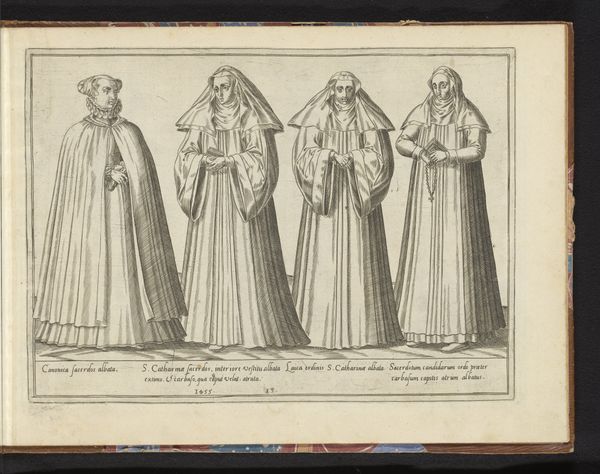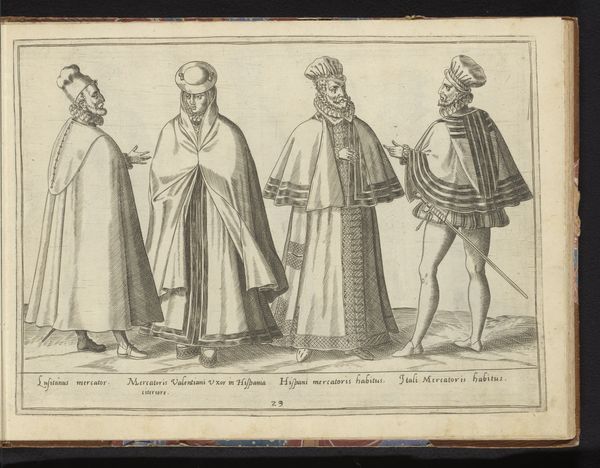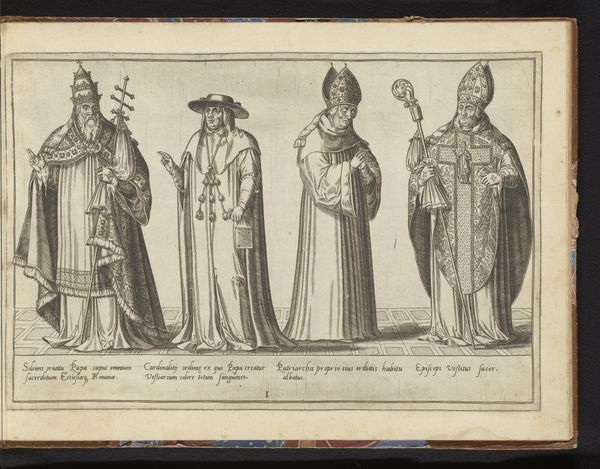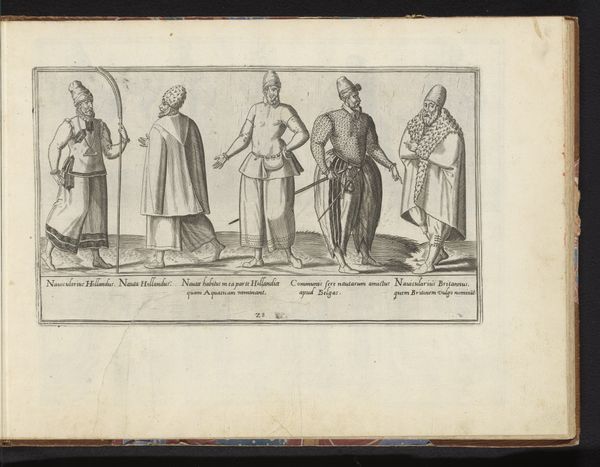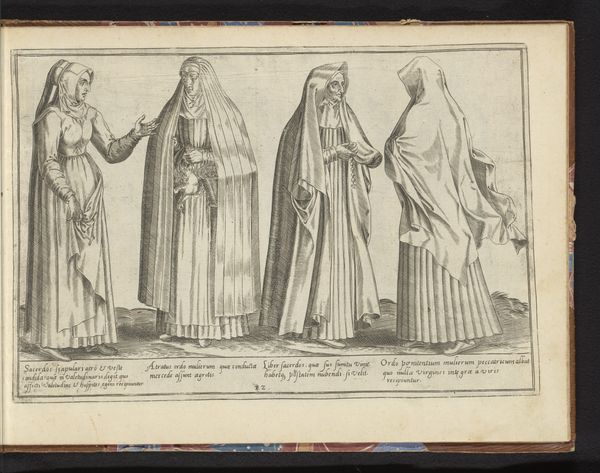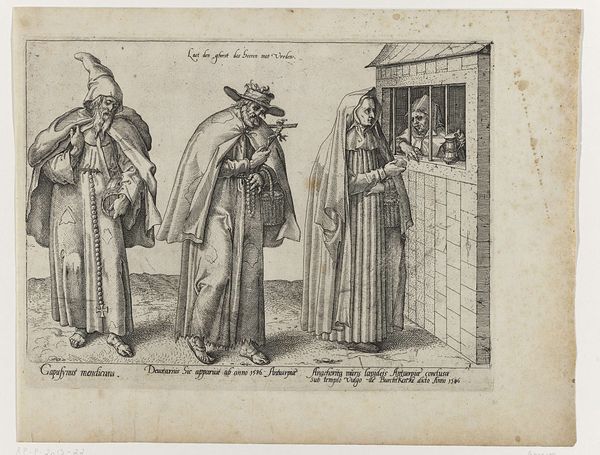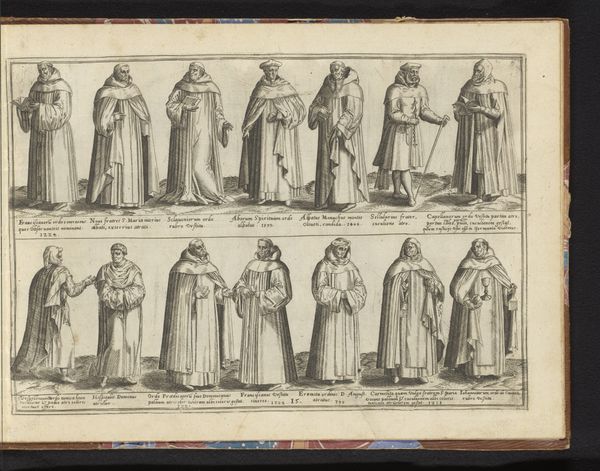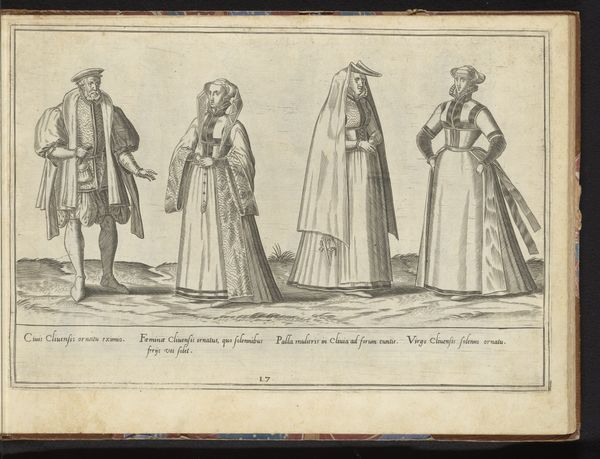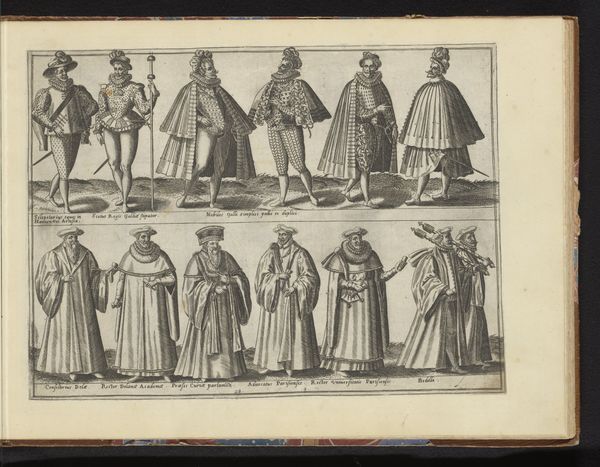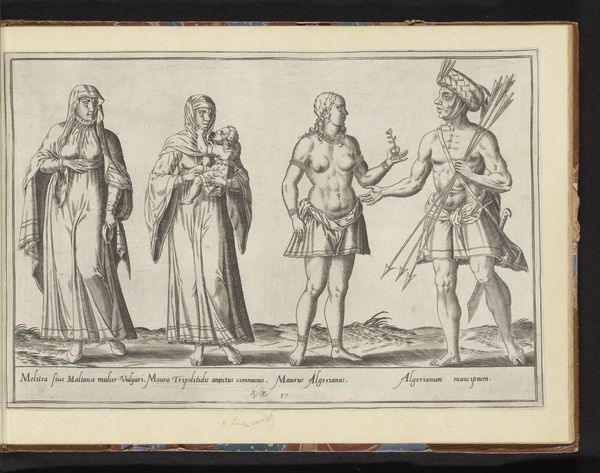
Drie monniken uit verschillende orden en een pelgrim met staf before 1581
0:00
0:00
print, paper, engraving
#
portrait
# print
#
paper
#
11_renaissance
#
coloured pencil
#
history-painting
#
engraving
Dimensions: height 265 mm, width 360 mm
Copyright: Rijks Museum: Open Domain
Curator: Isn't it fascinating how historical fashion can speak volumes? This engraving, "Drie monniken uit verschillende orden en een pelgrim met staf," dating back to before 1581, captures just that. Abraham de Bruyn is credited as the artist, and it's currently housed in the Rijksmuseum. Editor: It’s intriguing. The whole composition almost feels like a somber, dignified lineup, doesn’t it? The monochrome adds to the sense of seriousness. They’re all looking in different directions; maybe they symbolize different paths. Curator: Absolutely. Each figure embodies a specific order and its sartorial signifiers: a Salvatorian Abbot, a Magdalene candidate, and a "poor" order monk with rosary and staff followed by a member of the Dominicans Choir. It’s like a visual encyclopedia of religious garb. These outfits are incredibly important—clothing as communication! What statements do they proclaim? Editor: These uniforms aren't just fashion; they are political statements, a coded language about power, privilege, or a rejection of it. Even now we recognize the subtle semiotics of their clothes and trappings. Are these orders rivals, working together or perhaps depicted at the apex of their collective social capital? I wonder about the narratives not immediately apparent in the engraving. Curator: The artist might've sought to highlight the nuances between various orders, distinguishing them through specific clothing, but the date raises more questions too. Was this made for scholarly interest, or might there be a satirical commentary aimed at the state of monastic life at the time, prior to major upheavals? The level of detail seems like the creator was genuinely concerned with the visual identity of the portrayed subjects, and that's exciting! Editor: Precisely, an analysis using an intersectional lens suggests a critical interrogation of social and political currents reflected by that choice. Thank you. Curator: I've thoroughly enjoyed viewing this through your perspectives, as well. Thanks!
Comments
No comments
Be the first to comment and join the conversation on the ultimate creative platform.


